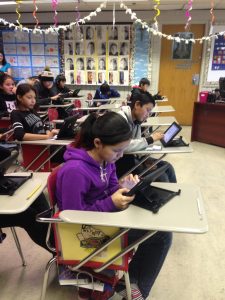 Reflection Question
Reflection Question
Why would you wish for your children (or grandchildren) to be assigned to a teacher who is a continuous learner, one who is consistently updating his/her knowledge base? In what ways might it be useful if the school supplied the resources for this learning?
Answer: Learning is a continuous cycle. From childhood to adulthood, we never stop learning. With new technologies, innovative approaches to classroom instruction it is imperative that teachers keep current with these new trends in teaching. It would be tragic if educators remained stuck in 20th century learning techniques and resources. As students engage with new devices, social media and other 21st century learning methodologies, education leaders must induce a collective and methodical approach to continuous learning so we keep students engaged.
To help keep teachers current, it is important that administrators keep key principles of change in mind when proposing new technology and the application to these resources in the classroom. First there must be in ‘implementation bridge’ where workshops, in-services and in-house experts can mentor their peers. It must also be understood that to take that ‘giant leap’ for some teachers may be faced with resistance and consequently, they will have to be accommodated with time to adapt and a reassurance that the change to their practice will see improved student outcomes. Finally, administrators will have to understand that each school will be at different levels of the change process. Otherwise called the ‘implementation bridge’, Hall and Word (2011) suggest administrators proposing change expect two-five years. After all, change is not an event, but a process.
Hall, G., Hord, S. (2011). Implementing Change: Patterns, Principles, and Potholes. Boston; Pearson Publishing Inc.